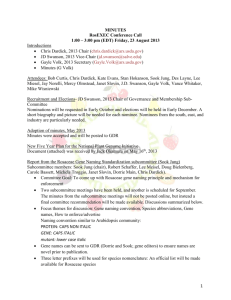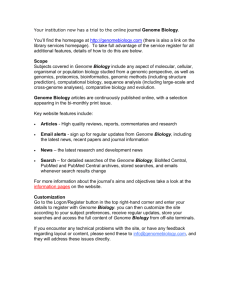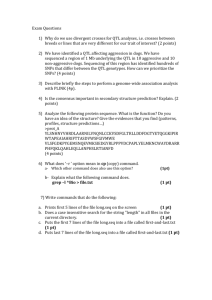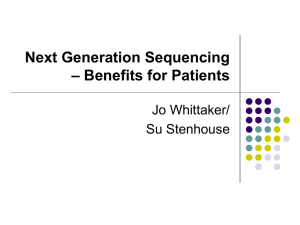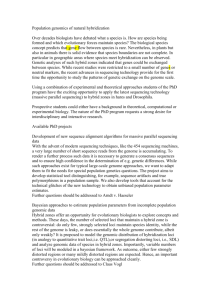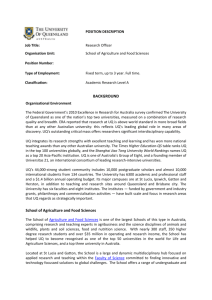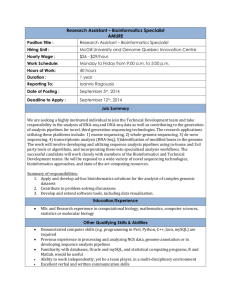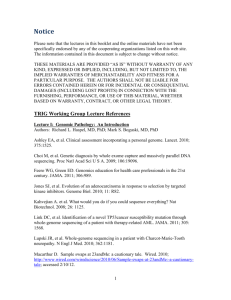Rosaceae priorities for future plant genome initiatives
advertisement
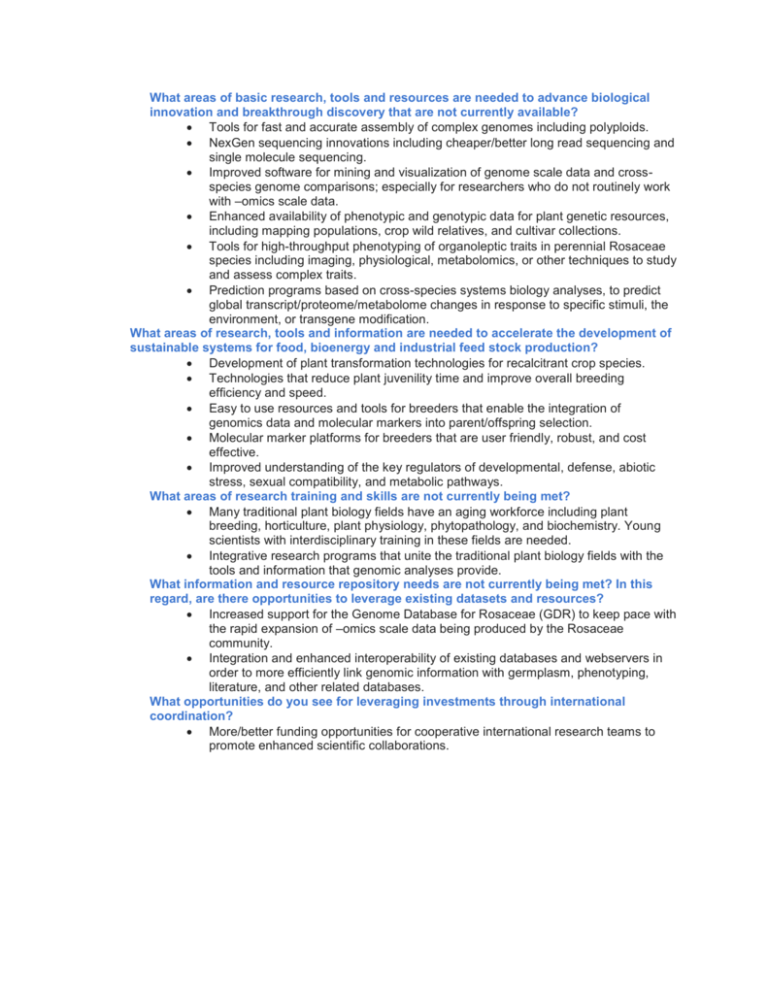
What areas of basic research, tools and resources are needed to advance biological innovation and breakthrough discovery that are not currently available? Tools for fast and accurate assembly of complex genomes including polyploids. NexGen sequencing innovations including cheaper/better long read sequencing and single molecule sequencing. Improved software for mining and visualization of genome scale data and crossspecies genome comparisons; especially for researchers who do not routinely work with –omics scale data. Enhanced availability of phenotypic and genotypic data for plant genetic resources, including mapping populations, crop wild relatives, and cultivar collections. Tools for high-throughput phenotyping of organoleptic traits in perennial Rosaceae species including imaging, physiological, metabolomics, or other techniques to study and assess complex traits. Prediction programs based on cross-species systems biology analyses, to predict global transcript/proteome/metabolome changes in response to specific stimuli, the environment, or transgene modification. What areas of research, tools and information are needed to accelerate the development of sustainable systems for food, bioenergy and industrial feed stock production? Development of plant transformation technologies for recalcitrant crop species. Technologies that reduce plant juvenility time and improve overall breeding efficiency and speed. Easy to use resources and tools for breeders that enable the integration of genomics data and molecular markers into parent/offspring selection. Molecular marker platforms for breeders that are user friendly, robust, and cost effective. Improved understanding of the key regulators of developmental, defense, abiotic stress, sexual compatibility, and metabolic pathways. What areas of research training and skills are not currently being met? Many traditional plant biology fields have an aging workforce including plant breeding, horticulture, plant physiology, phytopathology, and biochemistry. Young scientists with interdisciplinary training in these fields are needed. Integrative research programs that unite the traditional plant biology fields with the tools and information that genomic analyses provide. What information and resource repository needs are not currently being met? In this regard, are there opportunities to leverage existing datasets and resources? Increased support for the Genome Database for Rosaceae (GDR) to keep pace with the rapid expansion of –omics scale data being produced by the Rosaceae community. Integration and enhanced interoperability of existing databases and webservers in order to more efficiently link genomic information with germplasm, phenotyping, literature, and other related databases. What opportunities do you see for leveraging investments through international coordination? More/better funding opportunities for cooperative international research teams to promote enhanced scientific collaborations.

